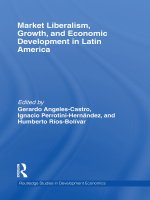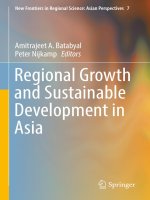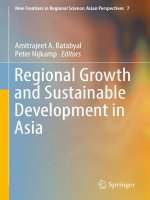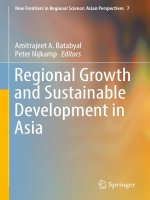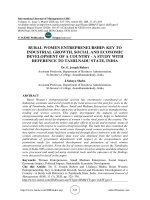Economic growth and economic development 68
Bạn đang xem bản rút gọn của tài liệu. Xem và tải ngay bản đầy đủ của tài liệu tại đây (140.61 KB, 1 trang )
Introduction to Modern Economic Growth
k(t+1)
45°
sf(k(t))+(1–δ)k(t)
k*
0
k*
k(t)
Figure 2.2. Determination of the steady-state capital-labor ratio in
the Solow model without population growth and technological change.
ignore this intersection throughout. This is for a number of reasons. First, k = 0
is a steady-state equilibrium only when f (0) = 0, which corresponds to the case
where capital is an essential factor, meaning that if K (t) = 0, then output is equal
to zero irrespective of the amount of labor and the level of technology. However, if
capital is not essential, f (0) will be positive and k = 0 will cease to be a steady state
equilibrium (a stationary point of the difference equation (2.16)). This is illustrated
in Figure 2.3, which draws (2.16) for the case where f (0) = ε for any ε > 0. Second,
as we will see below, this intersection, even when it exists, is an unstable point, thus
the economy would never travel towards this point starting with K (0) > 0. Third,
this intersection has no economic interest for us.
An alternative visual representation of the steady state is to view it as the
intersection between a ray through the origin with slope δ (representing the function
δk) and the function sf (k). Figure 2.4 shows this picture, which is also useful for
54
